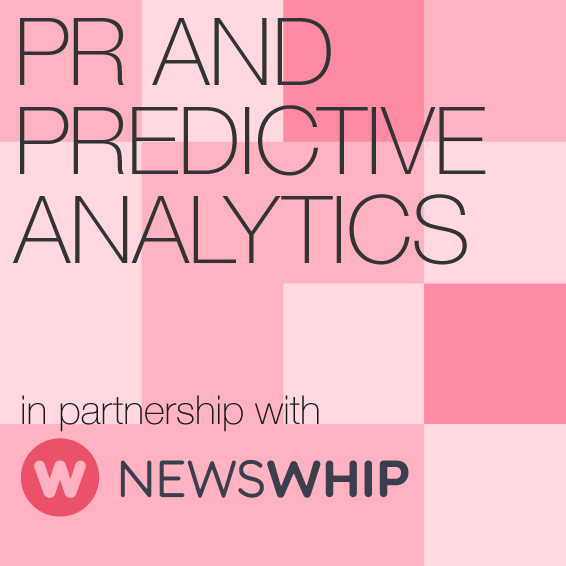NewsWhip 01 May 2019 // 3:29PM GMT

By Dervilla Mullan - Chief Product Officer at NewsWhip
It’s hard to avoid talking about Artificial Intelligence in the modern workplace, with its potential and risks becoming a point of huge discussion. On the one hand, we hear of its ability to transform how we tackle broad societal challenges, from healthcare to the environment, with an efficiency and effectiveness we’ve never had before. On the other, there exists a mix of fear and concerns - including at the top levels of government, who have been quizzing “AI experts about when the machines will take over”.
In the PR space, the topic of AI is treated with justified skepticism. The idea of a general PR AI assistant remains far away, and some of the Natural Language Processing and AI technologies that have arrived to date have over-promised and under-delivered. They are marketed with the right buzzwords, but they employ opaque methodologies. They often deliver unreliable results that, although they might look good on a dashboard, are hard to action, such as sentiment analysis.
We think the future opportunity is for AI to improve the effectiveness of PR professionals by providing them with new, complementary intelligence. In the words of Joi Ito, Director of MIT’s Media Lab, “Instead of thinking about machine intelligence in terms of humans vs machines, we should consider the system that integrates humans and machines – not artificial intelligence but extended intelligence.”
In line with this philosophy, the product team at NewsWhip believes the future, at least in the near term, is about extended intelligence, as opposed to the singular definition of artificial intelligence, where machines take control and take humans out of the loop. Hence we focus on the individual decisions that PR professionals need to make, and on how we can facilitate and enhance those decisions.
Our predictive signals show what’s happening in the world outside. We can make suggestions and outline what’s likely to happen, but we can’t dictate the next move. Here’s a real-world example of that. If one of your clients is experiencing a crisis, our technology can tell you how big that story will become in the coming hours. That allows you to shape the right strategy in response. There’s no replacing human ingenuity and expertise when it comes to that part.
Any predictive and AI technology must at its core make life easier for PR professionals. Brands need the time and attention of smart communicators now more than ever. We want to facilitate their smart work by freeing up time, and using AI to make tasks such as research or competitive analysis more efficient.
In order for it to be truly successful, predictive and AI technology must be based on real-time, real-world, highly granular data. You can’t make big predictions on thin datasets, and overpromising with models trained on small datasets has already led to skepticism of outputs. Of course, our users do not want to blindly accept a signal without understanding why they are receiving it, nor would we want that. We always facilitate and encourage our users to drill into the data behind our predictions to see what they are based on.
So, while the opportunity for extended intelligence is vast, it’s early days in the journey. Data is wonderful, but data for data’s sake can muddy the waters and make things more difficult for everyone involved, That’s why if we feel that if the data or models are not of sufficient accuracy to positively inform our users’ judgement, we don’t push ahead. We deliver intelligence incrementally, without assuming machine learning is the answer.
This approach is already helping our clients, such as Brunswick, to get ahead, and we believe the future potential for extended intelligence is vast.
Returning to the society questions about AI: our view is to reframe this analysis around how machine-based, scalable learning can enhance how we succeed, rather than one of machines and people fighting for supremacy. This allows us to see the potential to harness it more responsibly and find our place in this new world, and to create a more complementary relationship that will serve us into the future.


































.jpg)


.png)










